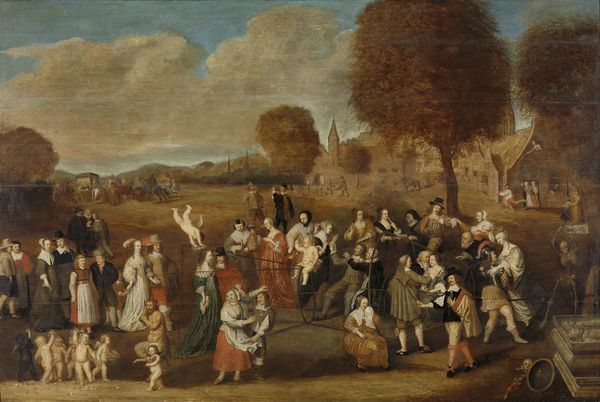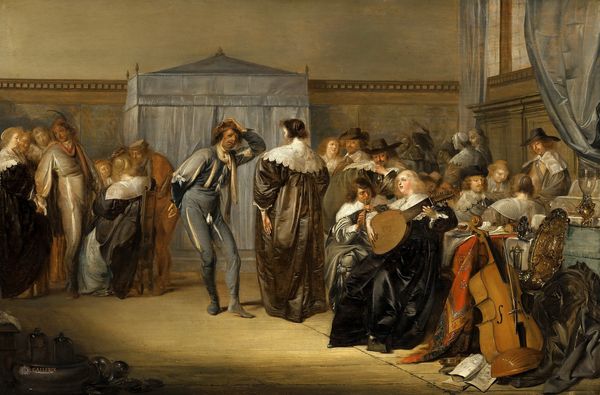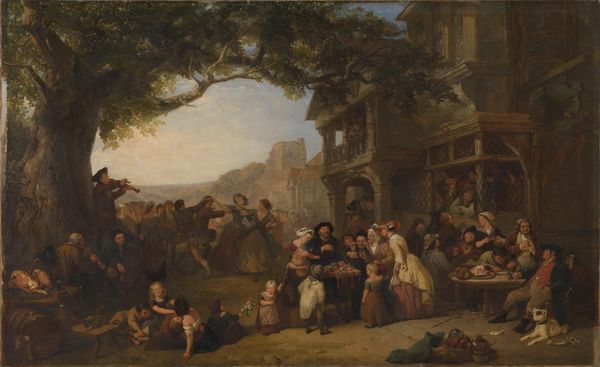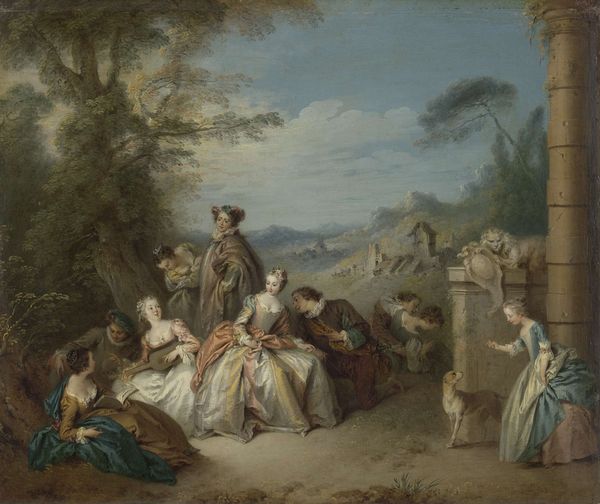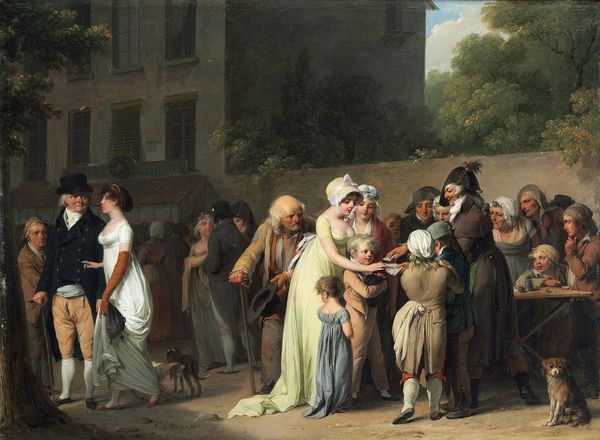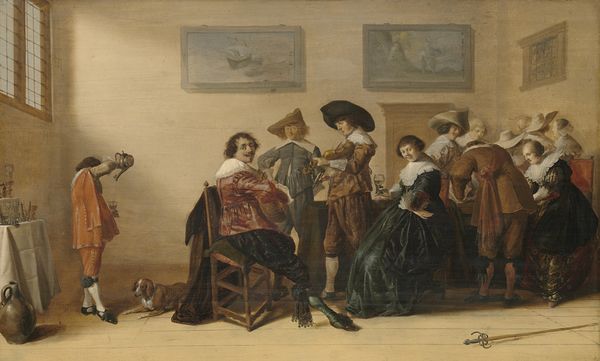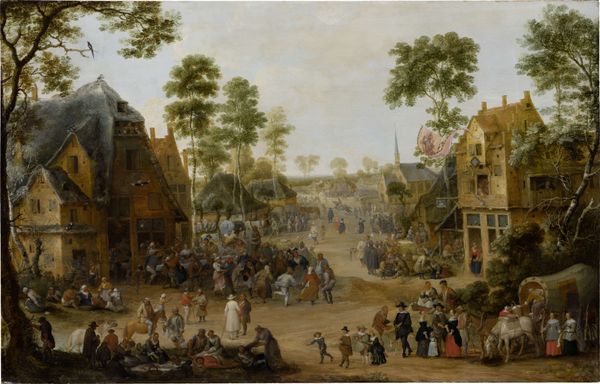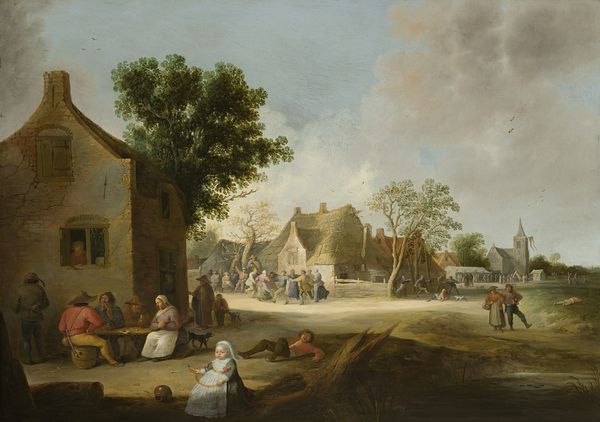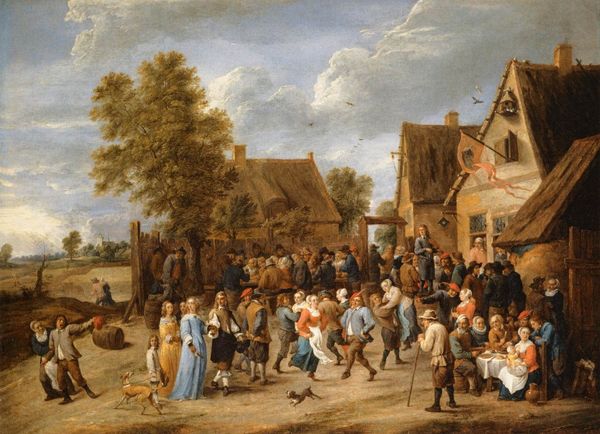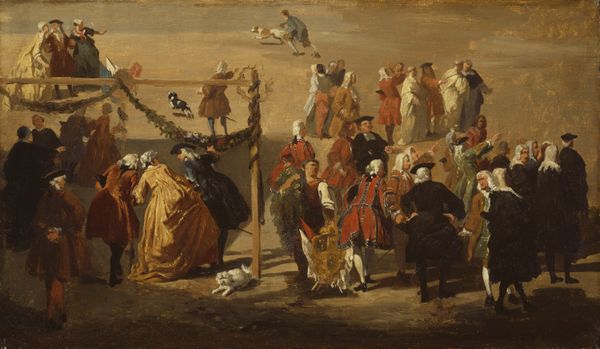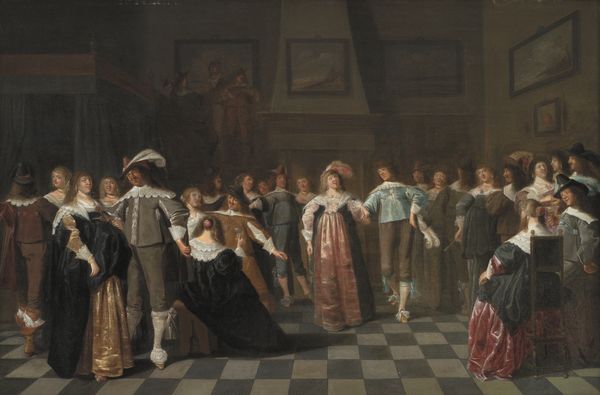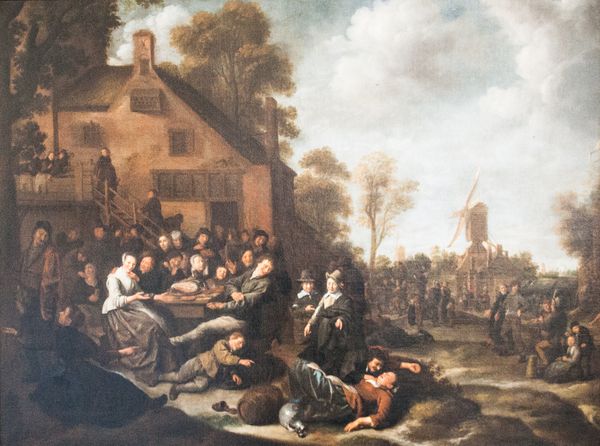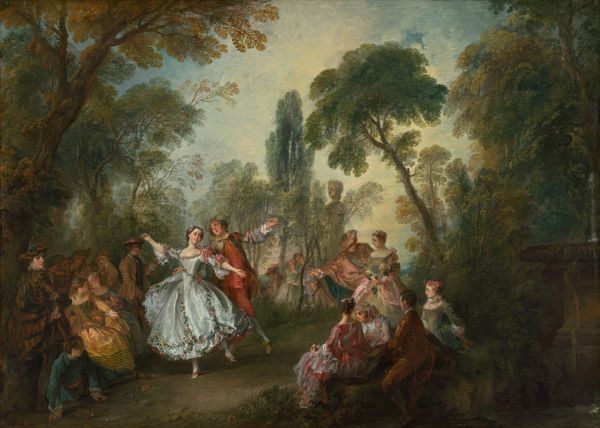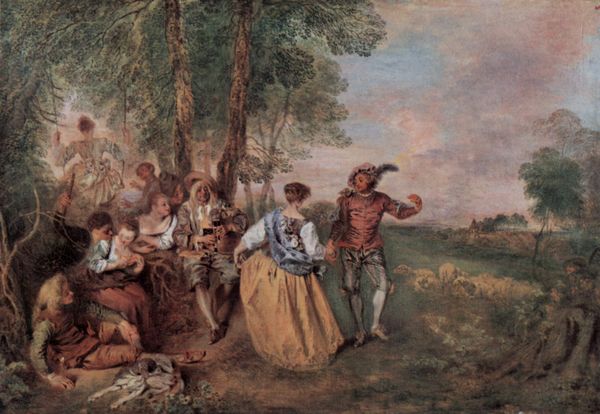
painting, oil-paint
#
baroque
#
painting
#
oil-paint
#
landscape
#
oil painting
#
group-portraits
#
genre-painting
#
history-painting
#
watercolor
Dimensions: support height 77.6 cm, support width 135.7 cm
Copyright: Rijks Museum: Open Domain
Editor: Here we have Dirck Hals’ "The Fête champêtre" from 1627, painted with oils. It strikes me as an almost staged scene, capturing a moment of leisure and maybe even performance. What kind of story do you see being told in this landscape? Curator: Well, let's consider the 'fête champêtre' itself. The phrase literally means 'country festival', so immediately it brings to mind notions of class and leisure. Looking at the attire and posture of the people, what social class do you think is being represented, and who would likely be viewing this piece? Editor: They definitely don’t look like farmers, their dress suggests wealth, maybe aristocracy. This probably hung in someone’s manor? Curator: Exactly. So, consider that for the wealthier classes, leisure and the visual representation of that leisure became a means of defining status. Do you see anything that gives hints about their status? Editor: I notice the rather opulent building in the background. And the way they're sort of… performing at leisure, right? Drinking, music-making… maybe it shows a lifestyle, and therefore power? Curator: Precisely. And isn't there something interesting in the *display* of this leisure, too? What's being said, not just about the subject in the frame, but about art's role for its patron? The painting is more than just an image of an event. It acts as a status marker, communicating power to any other elites who see it. Editor: I hadn’t considered it as almost a performative display beyond just what’s *in* the scene, but also how it *functions*. It really does shift how you read the composition. Thanks. Curator: And that performative nature reveals a great deal about societal values at the time. Considering these pieces through that socio-historical lens opens new layers of interpretation.
Comments
rijksmuseum about 2 years ago
⋮
The 17th-century public would have delighted in this amusing spectacle. At the same time, viewers would have been aware of its hidden message: there is more to life on earth than eating, drinking and merrymaking. A telling detail is the chained monkey: it stands for sinful man, who allows himself to be fettered by his base instincts.
Join the conversation
Join millions of artists and users on Artera today and experience the ultimate creative platform.
